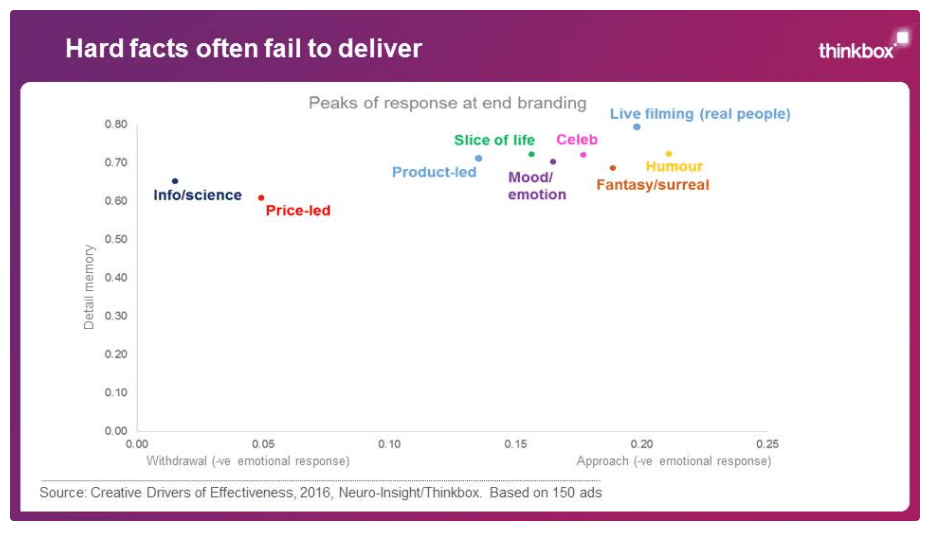Chart of the day: Neuroscience reveals that for long-term impact ads should appeal to emotion or make us laugh
In this example of neuromarketing, brain responses to over 200 TV ads were analysed. By looking at how the respondents' brains engaged in long-term memory encoding whilst watching the ads, Neuro-Insight were able to establish what makes for effective TV ads.
Since short-term memory only lasts a few seconds and then is lost forever, if you manage to get your ad into someone's long-term memory they'll be able to recall it for years. That means it's critical that your ads are able to make an impact and become part of someone's long term memory.

As the chart shows, information-based ads or discount-related ads make very little long-term impact on our brains. Opting for the 'hard sell' is clearly not effective. Humour stands out as the most effective approaches for creating a memorable ad, whilst using real people or focusing on emotion is also effective. The lesson is clear - focus on appealing to fundamental human traits and emotions, don't try and sell with a list of facts. These brain scans are on people watching TV ads, but many of the findings can equally apply to digital advertising, especially video ads. Focusing on telling a story and tugging the heart-strings should be the focus of more B2C digital advertising strategies.







